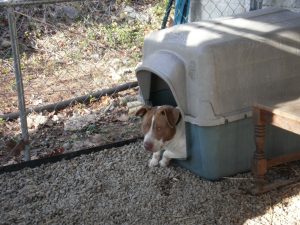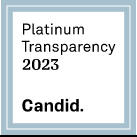Originally published May 30, 2014
 Boomer had his Immiticide treatments for his heartworm condition last week and spent several days feeling quite puny. He’s doing better now. He’s got a sparkle in his eye and a bounce in his step again. He’s ready to run and play. So this is an especially dangerous time in his treatment.
Boomer had his Immiticide treatments for his heartworm condition last week and spent several days feeling quite puny. He’s doing better now. He’s got a sparkle in his eye and a bounce in his step again. He’s ready to run and play. So this is an especially dangerous time in his treatment.
He feels better and the heartworms in his system are dead. But when they die the worms can float down-stream in his circulatory system: right into the myriad of vessels and capillaries in his lungs where they lodge and block the blood flow. He needs to be calm until his body can absorb the dead worm tissue.
Getting his heart rate up through running and rambunctious play greatly increases the chances that something in his lung will become clogged and “blow out” (pulmonary embolism) causing bleeding into his lung. This is often fatal.
HeartwormSociety.org puts it this way:
Post-Adulticide Heartworm Complications
Prior to treating the adult heartworms, your dog will be put on a 4 week course of doxycycline (or a related antibiotic). This helps reduce the viability of the parasite and decreases the reaction to the dying and decaying heartworms following adulticide treatment.
The primary post-adulticide complication is the development of severe pulmonary thromboembolism. Pulmonary thromboembolism results from the obstruction of blood flow through pulmonary arteries due to the presence of dead heartworms and lesions in the arteries and capillaries of the lungs. If heartworm adulticide treatment is effective, some degree of pulmonary thromboembolism will occur.
When dead worms are numerous and arterial injury is severe, widespread obstruction of arteries can occur. Clinical signs most commonly observed include fever, cough, hemoptysis (blood in the sputum) and potentially sudden death. It is extremely important to not allow exercise in any dog being treated for heartworms. Often dogs with severe infections will also require the administration of anti-inflammatory doses of corticosteroids.
Therefore, it is especially important that we not allow him to get all worked up. How much restriction is needed depends on the dog. Boomer is pretty laid back, so is kept in his pen except for supervised “walks” in the play yard. If he gets rowdy, he goes back to the pen. A more active dog that would jump around a lot in a pen would need to be crated to keep them safe from harm. Walks are on a leash, and the handler must keep the dog calm.
This is a time of tough love. Being kind and giving in to a dog’s desire to play may well kill that dog. Keeping our charges safe during heartworm treatment means being restrictive so he or she has the opportunity to heal and recover. The dog does not know the danger she’s in, we do. It’s our responsibility to protect these dogs.
After three to four weeks of restricted activity the dog can be slowly re-energized over another couple of weeks. Once treatment and recovery are complete the dog should be healthy again and ready to resume a normal life.
Heartworm Recovery: What to Watch For
During recovery, the handler needs to watch for signs of trouble: coughing, especially coughing blood, fever, trouble breathing, or increased lethargy. The dog’s gums should be pink, not white or red (indications of a secondary infection). If these are seen, consult the vet immediately. Antibiotics and crating may be indicated. If an embolism occurs complete rest is needed to allow the lung to heal. Lungs do not heal quickly.
How much danger there is and how long the recovery period will be depends on the severity of the heartworm infestation. If the condition was caught early and the worm population low (Stage 1 or 2) the chances of successful treatment is high and a 4 week recovery period is sufficient. The more advanced the condition, (Stage 3 or 4) the rougher the treatment will be and the longer the recovery time: giving the dog’s body time to absorb the dead worm tissue before becoming active again. In severe cases, (Stage 5) successful treatment is probably not possible. In these cases, hospice care is indicated.
Early detection of heartworms is important. Preventing infection in the first place is even better. Once infected, treatment is long and expensive. Save your dog and yourself a lot of trouble: use a preventative regularly.
| If you enjoy our updates, Doggy Tales, and educational articles consider subscribing for notices when new pieces are posted. It’s painless and you can unsubscribe any time you want. Your e-mail address is used ONLY to deliver these notices. | [email-subscribers namefield=”YES” desc=”” group=”Public”] |



